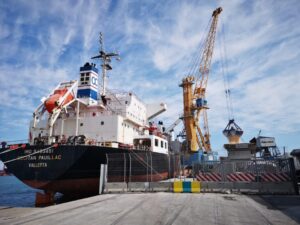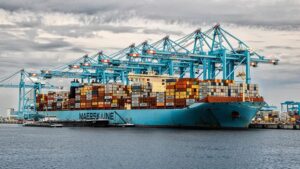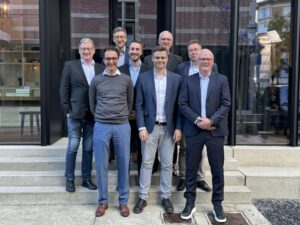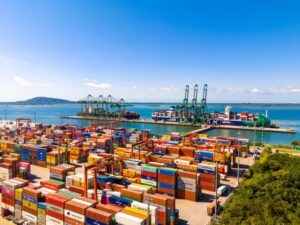The Port of Umm Sa’id has almost doubled its capacity with the help of global engineering and infrastructure advisory company Aurecon to ensure that the state of Qatar successfully holds the FIFA 2022 World Cup and achieves its National Vision 2030.
Aurecon is using its bulk ports experience and modelling technology to boost the country’s building materials supply chain, providing design, delivery, advisory and asset management services to design solutions that ensure the Qatari construction industry receives a steady and reliable supply of gabbro, a construction material for concrete and asphalt.
Qatar Primary Materials Company has supplied the vast majority of building materials in the country through its Port of Umm Sa’id (Mesaieed) Terminal and has initiated an expansion of the Port to boost the annual flow of gabbro through the terminal from 16.6 million tonnes per annum to 30 million tonnes.
This was done by increasing the efficiency of the facility’s existing Berths 2, 3 and the six unloading cranes operating on those berths.
Aurecon’s approach for its Engineering, Procurement and Construction (EPC) contract focused on the performance and efficiency of the proposed infrastructure and the integration of the new Terminal facilities with both the upstream and downstream supply chain processes.
Engineer Eisa Al-Hammadi, Chief Executive Officer of Qatar Primary Materials Company (QPMC), said: “One of our primary goals is to maintain strategic reserves of primary building materials to ensure we can supply materials at any time the need arises.
“We hold rich reserves that can address the current market requirements when it comes to primary materials such as gabbro. We are committed to providing complete solutions for the transport, storage and delivery of key primary materials to support the burgeoning construction industry in Qatar.”
The modelling presented by Aurecon demonstrated that to achieve the targeted throughput, changes were required from all supply chain partners. This included both upstream quarries and shipping companies and downstream consignees parties.
One example demonstrated how stowage plans at the port of origin could significantly impact unloading times in Qatar, cutting it down to 20 hours from up to 50 hours.
Aurecon also worked with QPMC to bring better efficiency to the portside stockyard by showing how consignees could collect their cargo within 21 days to ensure the stockyard always has space to unload other ships in the queue.
This information was then factored into the process of establishing the fee-charging structure, ensuring it was designed to encourage consignees to support portside stockyard requirements.
Glenn Hallahan, Aurecon’s Project Director, said: “At the time, we had recently assisted with the expansion of the Port of Fujairah in the UAE.
“In our first review of the project, we knew that a more detailed understanding of the impact on the supply chain would be required. We recommended advanced simulation modelling to evaluate the likely effects of the new design.
“We were able to present QPMC with a clear report that included animations and graphics to illustrate how the port and stockyard could operate without modifications to the original plan. The model highlighted bottlenecks that would limit the Port’s ability to maximise its capacity and brought the client’s focus onto resolving these issues.”












